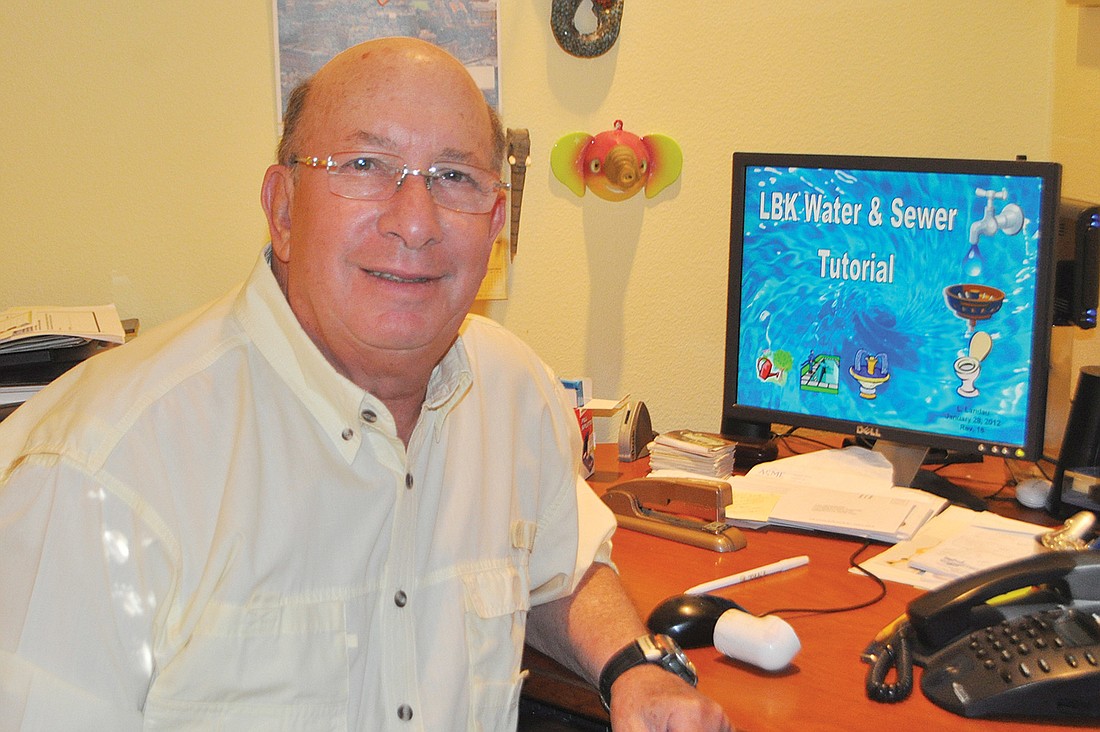- April 19, 2024
-
-
Loading

Loading

Lenny Landau wanted to understand the Key’s population cycle when he began combing through utility data last year. He had been invited to join the Longboat Key Revitalization Task Force, a group formed last year by former Mayor George Spoll with the goal of bringing back services and amenities the island has lost. The Task Force includes members from diverse fields such as law, development and architecture.
Landau, a mechanical engineer who still does consulting work for General Electric, figured he could contribute his data-crunching skills to the mission of revitalization by analyzing the population trends of the Key.
“People think they understand the cycle of population but nobody does,” Landau said. “But, if you’re going to talk about revitalization, it would be good if you could understand if that involves stabilizing population or drawing more population.”
Landau started out by compiling an array of data, including church attendance, sales taxes, tourist taxes, trash collection, Longboat Observer circulation numbers and water usage to determine the ebb and flow of population throughout the year.
The numbers showed that population peaks in March and is lowest in September — a finding that wouldn’t surprise any long-term resident. But what surprised Landau was that water usage didn’t have the wide seasonal fluctuations he expected. As he took a closer look at the data, he found that a large amount of water is essentially “lost.”
In some single-family home communities, more than 50% of water is billed off-season to empty homes for non-irrigation purposes — a sign that a problem, such as a leak or running toilet, exists.
The No. 1 cause of lost water is running toilets, according to Landau. (A closed-out home in Landau’s neighborhood used 100,000 gallons of water in a single month — compared to the 5,000 gallons typically used for non-irrigation purposes at an occupied single-family home in a single month.) In many cases, water is lost to a leak, either through a faucet, shower or sink inside the home or through outside lines. But those problems, of course, can occur in an occupied or unoccupied residence. But for many seasonal residences, water is lost through swimming pools — either through the automatic filling of leaky pools or hoses that are left inside of pools.
Landau said that many residents don’t notice increases in their water usage because water is relatively inexpensive. However, the amount of potable water that he estimates is “lost” every year — approximately 40% of the 600 million gallons that the Key pays for — can add up to hundreds of thousands of dollars.
Landau has uncovered many other findings throughout his study.
He found that during some months, the amount of wastewater that went from the Key to Manatee County was higher than the amount of water purchased from Manatee County — which is indicative of something “screwy” according to Landau, because water used for some purposes, such as irrigation, pools, washing cars and an air-conditioning cooling tower, doesn’t go back into the sanitary sewer system. He estimates that 40% of wastewater treatment bought could be from inflow and infiltration — i.e., leaks into the system. He also found that unmeasured town use of water has increased steadily since 2006, which he suspects may be the result of deteriorating meters.
According to Longboat Key Public Works Director Juan Florensa, who has been working with Landau on his study from the beginning, Landau’s findings have been valuable because he has given the town a tool with which to quantify data. Because of Landau’s help, the town can take a more focused look at certain utility issues, according to Florensa, instead of going in “20 different directions.” For example, because of Landau’s findings that show a correlation between inflow-and-infiltration and rainfall, the town will do additional testing in the low-elevation Longbeach Village, which frequently floods, which could be used to determine if tests elsewhere are needed.
Although Landau is a natural number-cruncher, there’s one figure he doesn’t want to calculate: the hours he has spent on the project (all at no charge). But, ultimately, Landau likes the challenge.
“I’ll do this rather than working on a crossword puzzle or watching TV,” he said.